DIY Greenhouse Ideas: Economical Ways to Create Your Dream Garden
Table of Contents
Growing your own plants year-round doesn’t have to be expensive. With creative DIY greenhouse ideas, you can transform everyday materials into a thriving garden that extends your growing season and protects your precious plants from harsh weather. Whether you’re a seasoned gardener or just starting out, building your own greenhouse offers significant benefits to your budget and gardening success.
The beauty of home greenhouse projects lies in their adaptability and affordability. Unlike expensive commercial greenhouses that can cost thousands of dollars, home versions can be built inexpensively using recycled materials, simple tools, and a little creativity. Plus, you’ll get the satisfaction of creating something both functional and beautiful with your own hands.
Why Choose DIY Greenhouse Solutions?
Building your own greenhouse isn’t just about saving money; it also involves creating a customized growing environment that perfectly fits your space, needs, and budget. Home greenhouses offer several great advantages:
Cost-effectiveness stands out as a key advantage. While commercial greenhouses range in price from $500 to $25,000, most home greenhouses range from $50 to $500, depending on the size and materials used. This significant cost difference makes greenhouse farming accessible to almost everyone.
The flexibility of customization allows you to design your greenhouse to fit awkward spaces, complement your home’s aesthetic, or meet the needs of specific plants. You’re not limited to standard sizes or designs—your imagination is the only limit.
Educational value turns the building process into a learning experience for the entire family. Children can participate in age-appropriate tasks while learning about construction, plants, and sustainability.
Simple Greenhouse Projects for Beginners
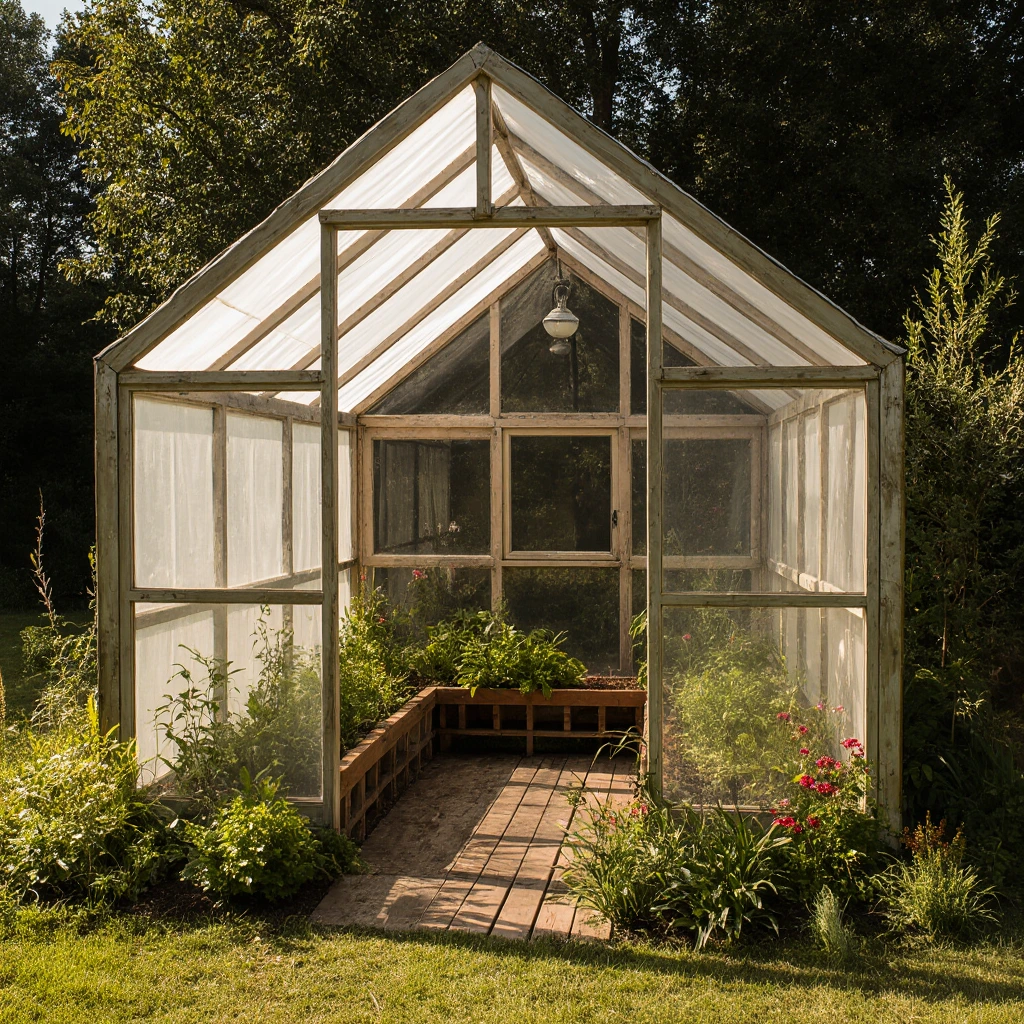
Mini Plastic Bottle Greenhouse
This extremely economical project costs less than $20 and provides excellent protection for seedlings and young plants.
Needed Materials:
- 20-30 clear plastic bottles (two-liter bottles are best)
- Wooden frame materials (recycled wood or solid wood)
- Wire or plastic ties
- Basic tools (saw, drill, wire cutter)
Step-by-Step Construction:
- Remove the labels from the bottles and clean them thoroughly.
- Cut the bottles in half, leaving the tops with the caps.
- Build a simple rectangular frame using wooden pieces.
- Secure the bottle halves to the frame to form walls.
- Provide ventilation by drilling holes in the bottle caps.
- Add a clear plastic cover or more bottles for the roof.
This design is ideal for herb gardens, protecting seedlings, and starting small vegetables. The bottles create their own microclimate, while the overall structure provides wind protection.
PVC Pipe Net House
This versatile design adapts to various sizes and can be built in a weekend for less than $100.
Materials Required:
- PVC pipe (3/4 inch diameter)
- Plastic panels (6 mil thickness recommended)
- Rebar stakes or ground anchors
- Clamps or clips for securing the plastic
- End wall framing materials
Construction Process:
- Mark the greenhouse space on level ground.
- Drive rebar stakes into the ground every 3-4 feet.
- Bend the PVC pipes over the stakes to form circular rings.
- Secure the pipes to the stakes using clamps or wire.
- Stretch the plastic panels over the frame.
- Secure the plastic with clamps, ensuring they are securely fastened.
- Build end walls using wood and plastic frames.
The circular greenhouse design is highly versatile—you can easily extend the length, adjust the height, or modify the ventilation to suit your needs.
Recycled Window Greenhouse
Turn old windows into a charming greenhouse that will add a distinctive touch to any space in your garden.
Materials Needed:
- 4-6 matching windows (check thrift stores and refurbishment sites)
- Pressure-treated lumber for the base and frame
- Hinges for roof access
- Insulation
- Roofing material (clear polycarbonate or glass)
Construction Steps:
- Clean and repair windows, replacing broken glass if necessary
- Build a rectangular base frame using pressure-treated lumber
- Install windows to create walls, ensuring proper alignment
- Install hinged roof sections for easy access and ventilation
- Add insulation to prevent drafts
- Install automatic vents for temperature control
This design creates an attractive focal point while providing excellent growing conditions. The thermal mass of the glass helps regulate temperature naturally.
Essential Materials and Tools for Building Your Own Greenhouses
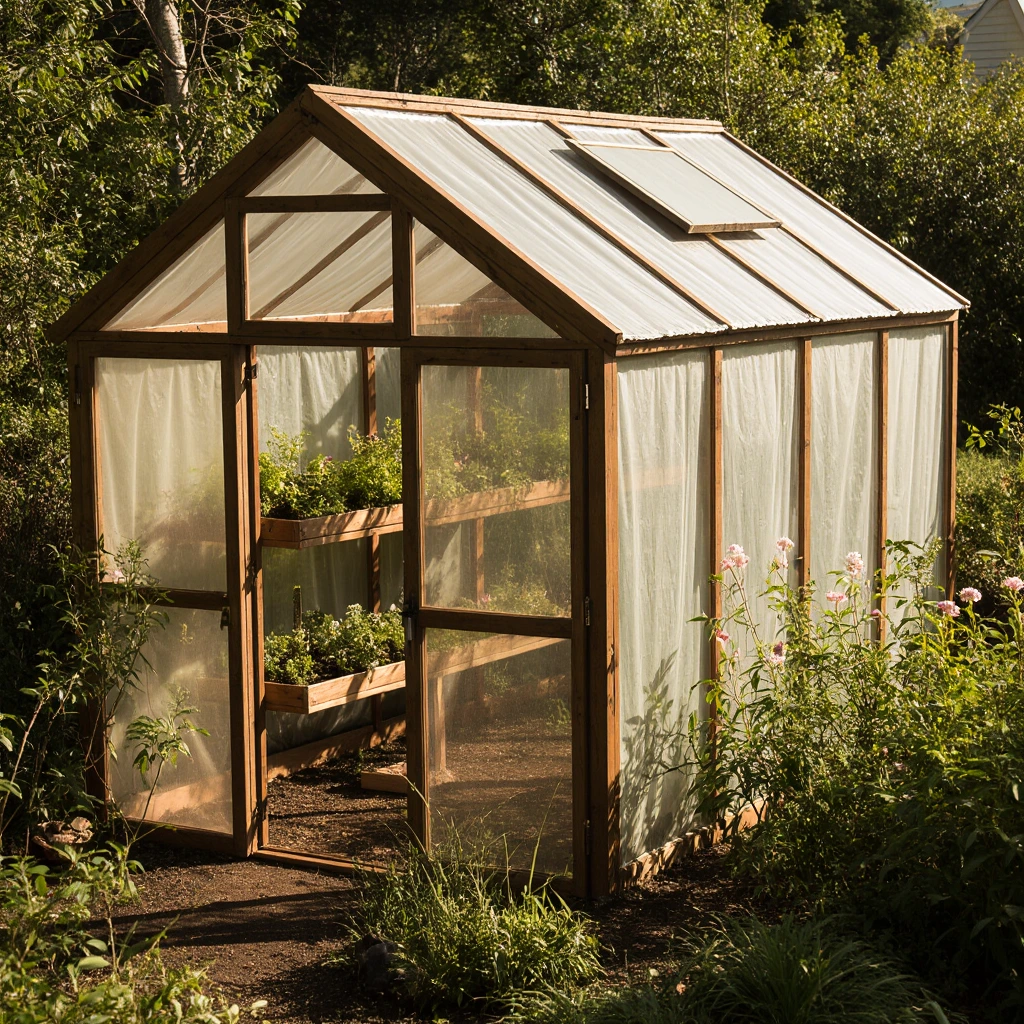
Economical Material Options
Recycled Materials offer the most cost-effective way to build a greenhouse. Search construction sites, renovation projects, and online marketplaces for:
- Old windows and doors
- Unused PVC pipes
- Surplus wood
- Clear plastic sheets
- Metal roofing sheets
New Materials provide stability and reliability when recycling options are unavailable:
- Polycarbonate panels provide excellent insulation and durability.
- Greenhouse-specific plastic provides UV protection and longevity.
- Treated wood ensures structural integrity in outdoor conditions.
- Galvanized hardware prevents rust and corrosion.
Essential Tools
Essential hand tools used in most greenhouse construction tasks:
- Tape measure and level for precise construction.
- Saw (circular or hand) for cutting wood.
- Drill bits with various bits for assembly.
- Hammer for general masonry work.
- Wire cutters for securing materials.
Useful Power Tools speed up construction and improve accuracy.
- Miter saw for precise, clean cuts.
- Impact driver for faster screw installation.
- Jigsaw for curved cuts and adjustments.
Creative Ideas for Recycling Greenhouse Materials
Reuse Household Items.
Plastic containers instantly transform into mini-greenhouses with minimal modification. Large storage containers, fish tanks, and even old refrigerators can be converted into growing spaces with good ventilation and natural light.
Glass doors and shower stalls provide excellent greenhouse walls with built-in structural supports. Their large surface area enhances light penetration with minimal modifications.
Trampoline frames provide pre-fabricated circular structures, ideal for domed greenhouses. Simply add mulch to create a unique and eye-catching growing space.
Seasonal Material Sources
Spring cleaning season provides an abundance of materials as homeowners clear out garages and sheds. Look for reusable lumber, tools, and containers.
Post-holiday sales provide opportunities to find materials at bargain prices. There is often leftover wood in Christmas tree yards, and garden centers may offer discounts on greenhouse supplies.
Home improvement stores offer end-of-season sales that offer significant discounts on greenhouse materials and tools.
Seasonal and Custom Greenhouse Projects
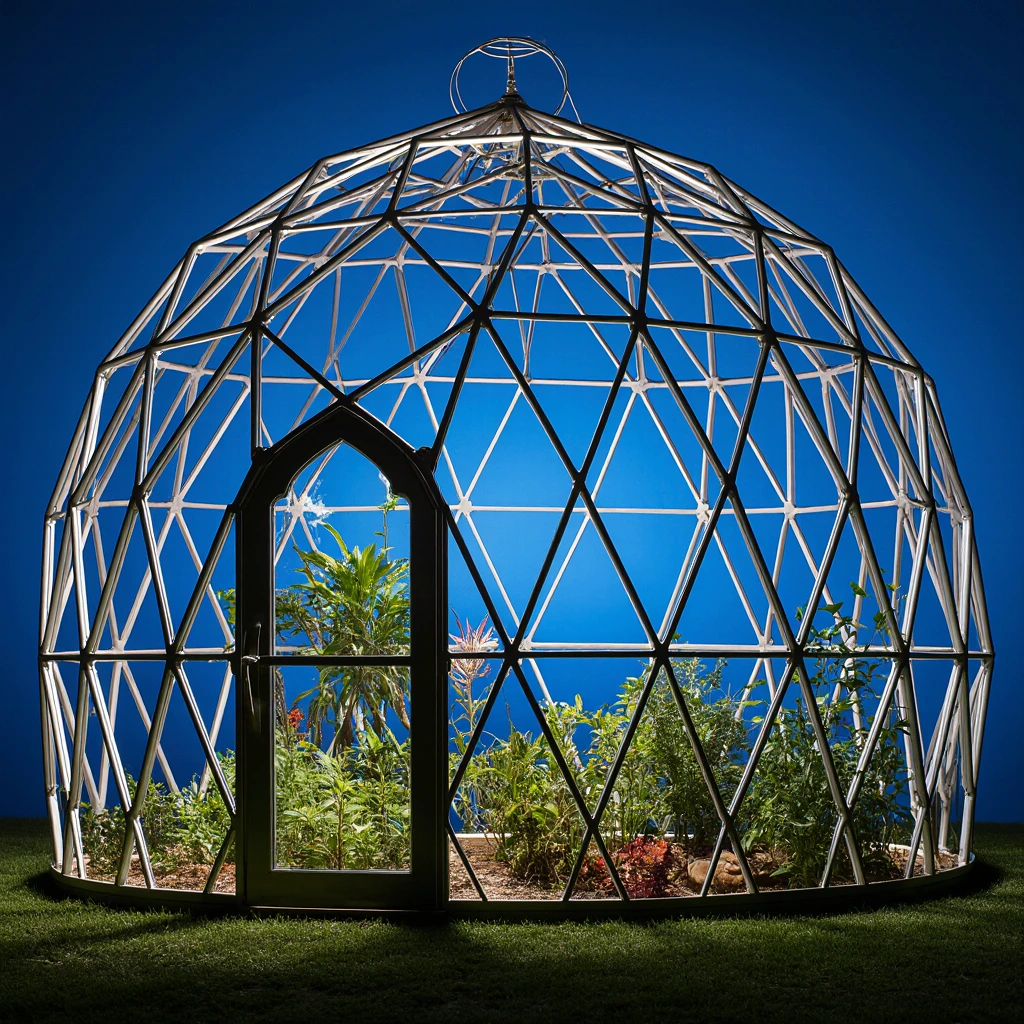
Four-Season Growing Solutions
Winter Greenhouse Modifications extend growing seasons in cold climates:
- Increase thermal mass using black-painted water barrels
- Install backup heating systems for extreme cold
- Use double-walled materials for better insulation
- Create cool structures inside the greenhouse for added protection
Summer Cooling Strategies prevent overheating in hot climates:
- Install automatic vents to control temperature
- Add shade cloth during busy summer months
- Install exhaust fans for air circulation
- Design with cross-ventilation in mind
Custom Greenhouse Designs
Helix Greenhouses for Growing Herbs combine permaculture and protected agriculture principles. Create a raised spiral bed within your greenhouse, creating microclimates for various herbs while increasing space efficiency.
Hydroponics integration transforms your greenhouse into a complete growing ecosystem. Combine fish tanks with plant nurseries, creating a sustainable cycle where fish waste feeds the plants.
Vertical farming systems boost production in limited space. Install shelving, hanging systems, or tower gardens to double your growing space without expanding your greenhouse.
Common DIY Greenhouse Mistakes and How to Avoid Them
Planning and Design Mistakes
Inadequate foundation preparation leads to structural problems and poor drainage. Always level your site, provide adequate drainage, and create a stable base, whether using concrete, gravel, or treated wood.
Poor ventilation design causes overheating, moisture problems, and plant diseases. Plan for vents in the roof and sides, ensuring free airflow throughout the structure. As a general rule, ventilation should cover 15-20% of the floor area.
Ignoring local building codes may result in fines or forced demolition. Consult local authorities regarding permit requirements, setback restrictions, and height restrictions before starting construction.
Construction Challenges
Inadequate anchoring allows structures to shift or blow away during storms. Use proper ground anchors, rebar stakes, or concrete footings, depending on your design and local wind conditions.
Poor weatherproofing reduces efficiency and shortens the life of the structure. Seal all joints, use appropriate insulation, and ensure that the covering materials will not deteriorate rapidly under the influence of ultraviolet radiation.
Poor structural support causes framing materials to sag or collapse under snow loads. Choose framing materials sizes appropriate for the wind and snow loads in your climate.
Operational Issues
Temperature control issues stress plants and reduce their productivity. Install minimum/maximum temperature gauges to monitor conditions and adjust ventilation accordingly.
Irrigation challenges in greenhouse environments require careful planning. Consider drip irrigation systems, self-watering containers, or automated irrigation solutions to ensure consistent humidity.
Pest control becomes critical in enclosed environments. Implement integrated pest control strategies, including beneficial insects, proper drainage, and early detection systems.
Maximize Your DIY Greenhouse Investment
Smart Planning and Organization
Zoning your greenhouse based on plant needs improves growing conditions. Create warm areas near thermal mass, cooler areas near vents, and humid zones for tropical plants.
Maximizing vertical space significantly increases growing capacity. Install shelving systems, hanging baskets, and wall-mounted planters to maximize productivity.
Improving workflow reduces maintenance time and improves efficiency. Design paths for easy access, conveniently locate water sources, and organize tools within easy reach.
Technology Integration
Automated systems reduce daily maintenance while improving plant care. Consider automated vents, watering timers, and monitoring systems that alert you to problems.
Smart sensors provide real-time data on temperature, humidity, and soil moisture. Many affordable options connect to smartphone apps for remote monitoring.
LED grow lights extend growing seasons and improve plant quality. Modern LED systems consume minimal electricity while providing optimal light spectrums for plant growth.
Building a greenhouse yourself is more than just a construction project; it’s an investment in sustainable living, food security, and personal satisfaction. By choosing to build over purchase, you create a customized growing environment that perfectly meets your needs, while developing valuable skills and saving significant amounts of money.
The beauty of building your own greenhouse is its scalability and adaptability. Start with a simple net house or glass greenhouse, then expand and refine your design as your experience and needs grow. Every project teaches you valuable lessons that will inform future improvements.
Remember, the most successful greenhouse projects balance ambition with practicality. Start with achievable goals, use quality materials within your budget, and prioritize function over aesthetics in your initial projects. As your confidence grows, you can tackle more complex designs and add advanced features.
Start Your Greenhouse Building Journey Today
Are you ready to transform your growing season with a DIY greenhouse? Start by assessing your space, setting a realistic budget, and choosing a design that fits your skill level. Remember, even the simplest greenhouse can significantly extend your growing season and increase your harvest.
Share your progress on your home greenhouse project with our community; we look forward to seeing your creative solutions and unique designs! Sign up for our newsletter for more affordable DIY projects and seasonal gardening tips that will help you create your dream garden without breaking the bank.
Best Amazon Picks :
FAQs
Q: How much does it cost to build a home greenhouse?
A: Home greenhouse costs vary greatly depending on size and materials. Simple hoop houses can be built for $50-$100, while larger, more permanent structures can cost between $200-$500. This represents a significant savings compared to commercial greenhouses that cost between $1,000 and $25,000.
Q: What is the ideal size for a beginner’s first greenhouse?
A: Start with a 6 x 8 foot or 8 x 10 foot greenhouse. This size provides enough space for good production while maintaining ease of construction and maintenance. You can always expand later as your experience grows.
Q: Can I build a greenhouse without a permit?
A: Permit requirements vary depending on the location and size of the structure. Generally, small, temporary structures under 120 square feet do not require permits, while permanent foundations or structures larger than certain sizes do. Always check with your local building authorities before beginning construction.
Q: What are the best materials for covering your own greenhouses?
A: For budget buildings, 6-mil plastic panels provide good protection and light transmittance. For long-term solutions, polycarbonate panels offer better insulation and durability. Glass provides excellent light transmittance, but is more expensive and requires a stronger frame.
Q: How do I prevent overheating in my own greenhouse?
A: Install adequate ventilation with vents in the roof and sides, covering 15-20% of the floor area. Use automatic vents, add exhaust fans to circulate air, and consider using shade cloth during the busy summer months. Good ventilation is essential for plant health.

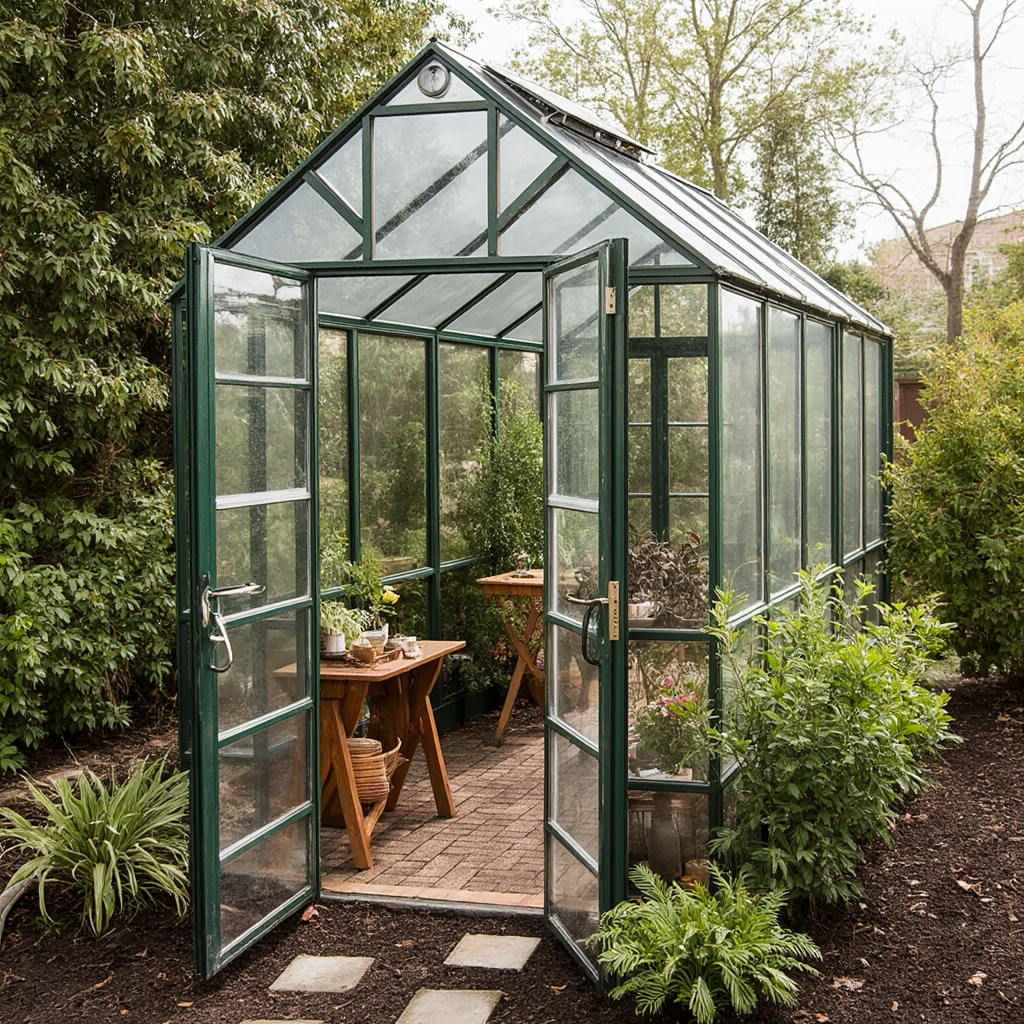
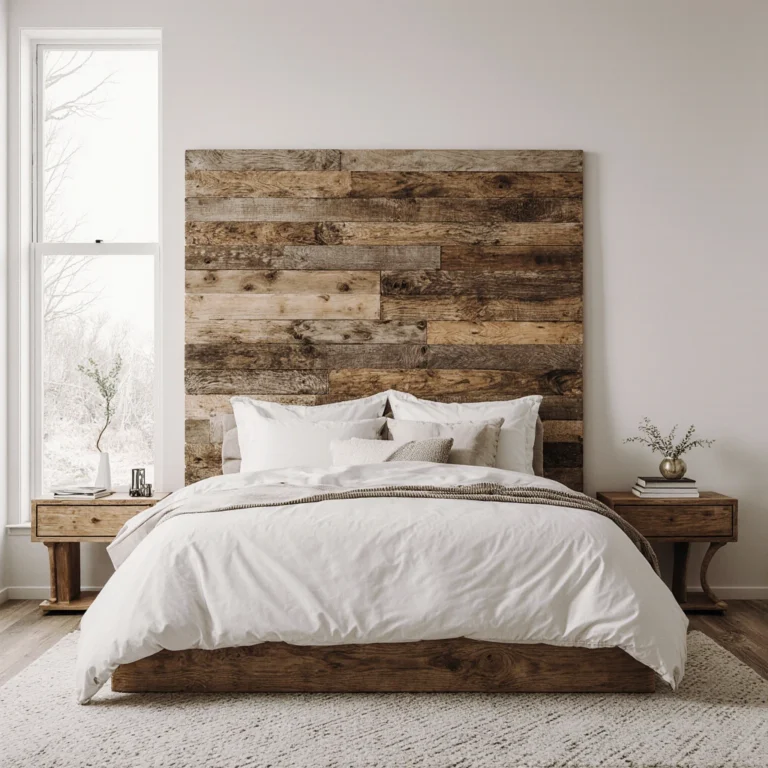

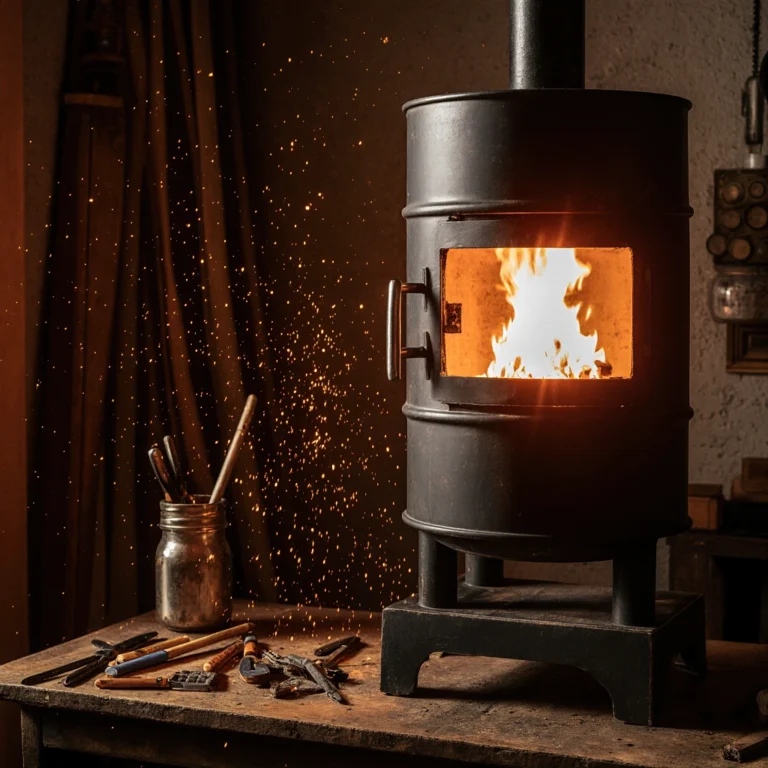
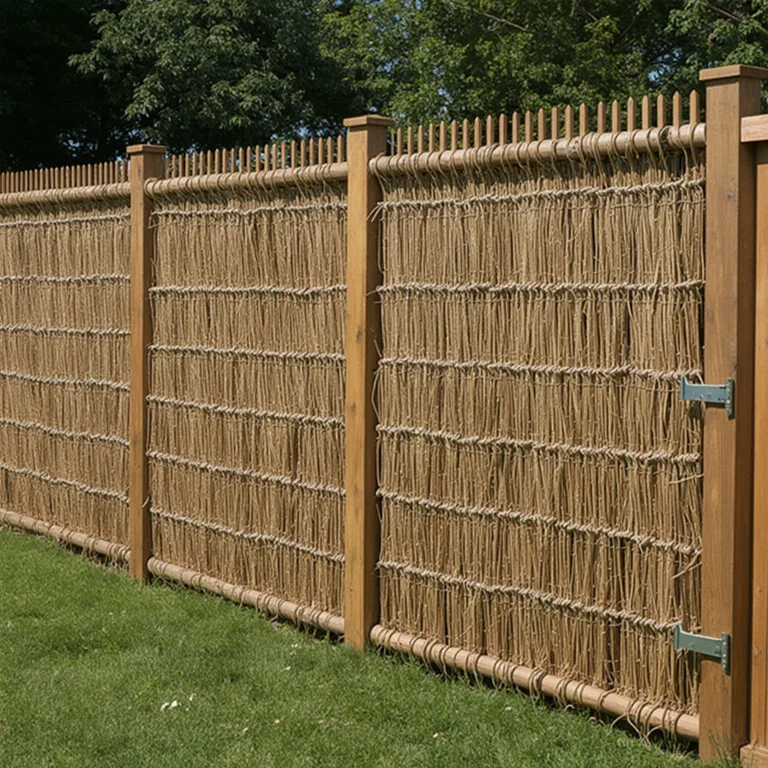
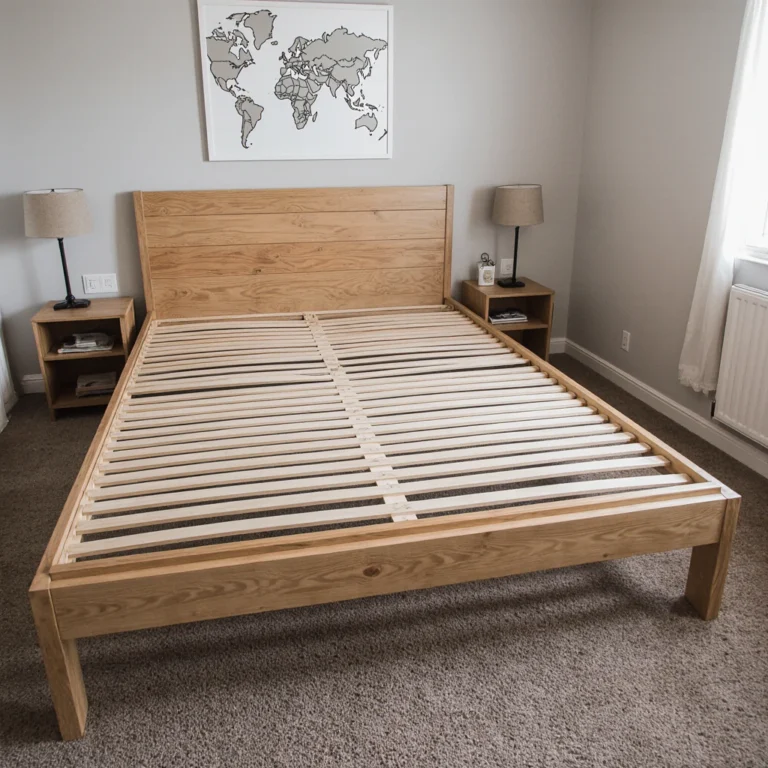
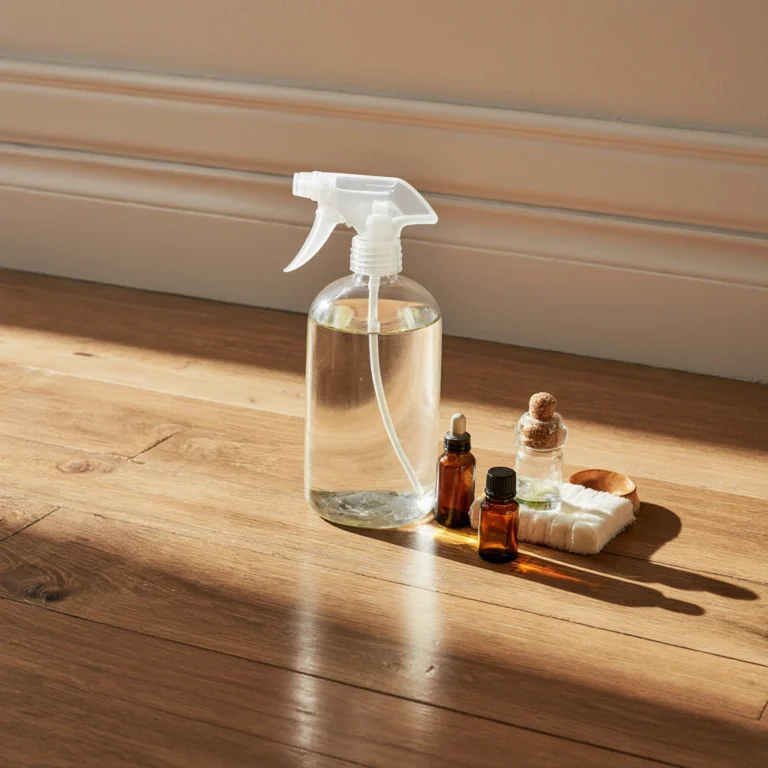
One Comment
Comments are closed.